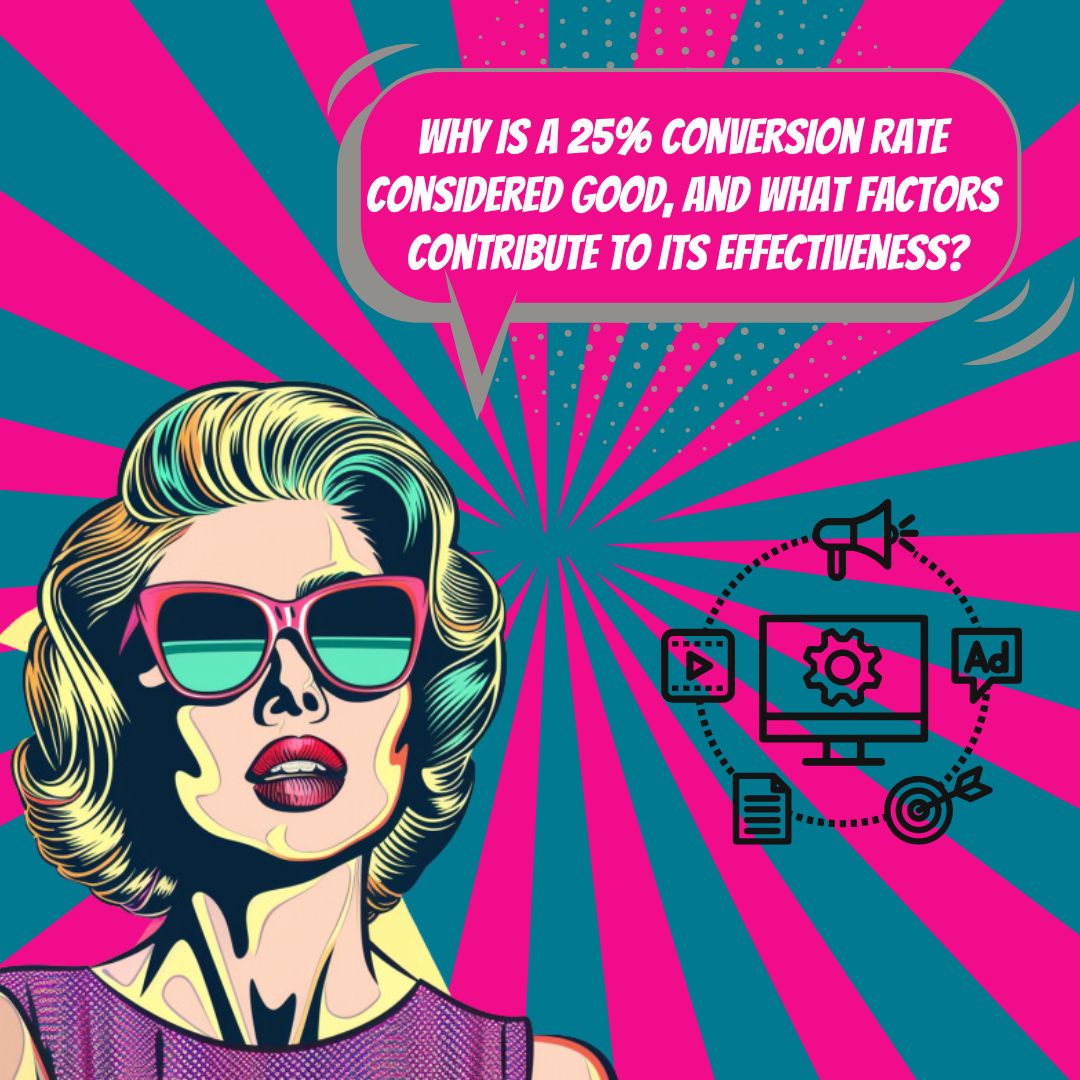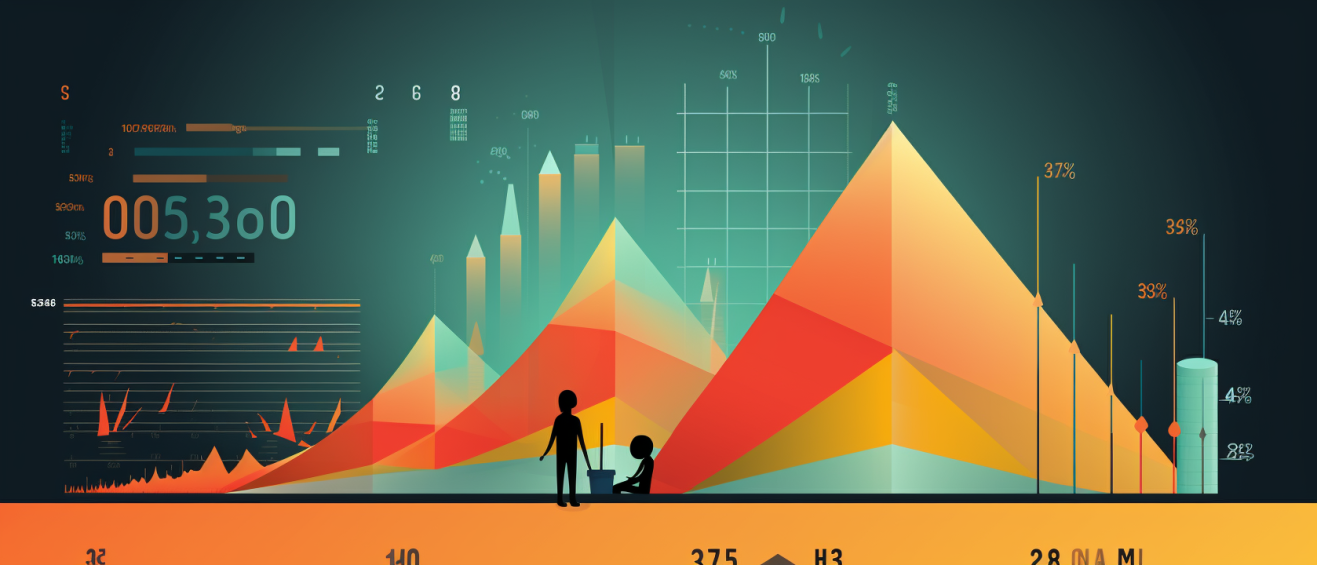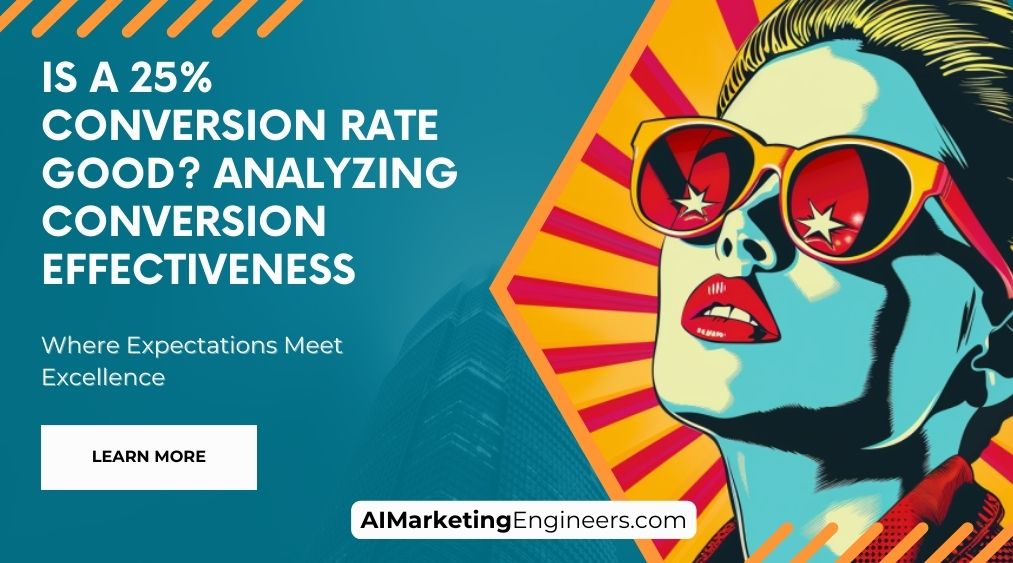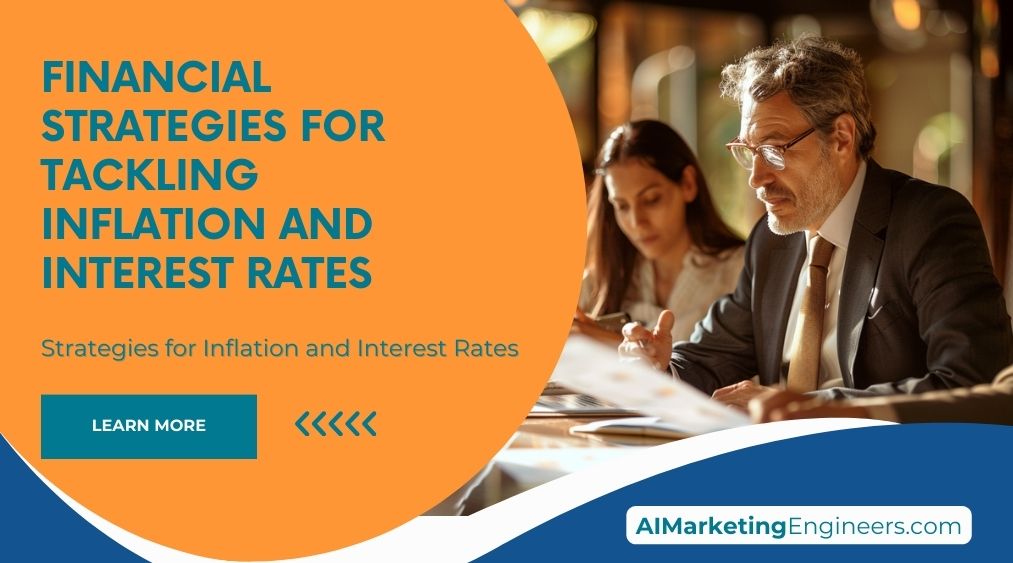Key Takeaways
✅ Conversion rate benchmarks are a start, but don't tell the whole story. That coveted 25% conversion rate might be the gold standard in some circles, but have you ever stopped to wonder if it applies to your game? Different industries, targets, and goals mean your mileage may vary. Measure up against others, sure, but measure against yourself first and foremost.
✅ When it comes to what affects a conversion rate, the devil's in the details. Your website's look and feel, the overall user experience, heck, even the way your product shines on the page – it all adds up. There's a science and art to nudging that conversion rate needle north. Keep tabs, tweak, and test to keep it climbing.
✅ Continuous Optimization: Not just a fancy buzzword but your secret weapon. That 25% is just a rung on the ladder. To scale new heights, listen to your customers, read the digital tea leaves, and adjust. It's a bit like gardening – prune and tend regularly for growth. It's hands-on, but the rewards? Well, they're pretty lush.

Introduction
Ever looked at your numbers and thought, "Is that all there is?" Maybe you've heard whispers about this 25% conversion rate and wondered if it's the magic number, the industry's best-kept secret. It's like that old question: if a tree falls in the forest… But really, if your conversion rate doesn't stack up, does it make a sound in the market forest? In this slice of internet goodness, we're slicing through the numbers game and sifting for gold.
Setting out on this journey, we'll demystify the conversion rate and why it's the heartbeat of online marketing. Fear not—we'll walk you through the whole shebang. We'll weigh up industry benchmarks and shine a spotlight on personalization, user experience, and those sneaky little things that might be tripping you up. Ever feel the cold sweat of a slow-loading page? Your customers sure do.
We're not about the fluff; we're about the real deal—hard facts with a side of easy-to-implement tips. Stick around, and you'll uncover the groundbreaking insights and hot-off-the-press tricks to up those numbers. Your business's success story might just need that extra detail you'll find here. Are you ready to tumble down the rabbit hole of possibilities where a 25% conversion rate is just the beginning? Let's roll up those sleeves and get cracking, shall we?

Top Statistics
| Statistic | Insight |
|---|---|
| Average Conversion Rates by Industry: E-commerce sits at 2.55%, while Education is at 5.61%. (Source: WordStream, 2021) | Knowing where you stand in your industry can shed some light on whether a 25% conversion rate is not just good, it's fantastic. |
| Mobile Conversion Rates: On average, mobile rates are 0.75%, which is lower than desktop's 2.45%. (Source: Think with Google, 2020) | Are you looking at your mobile strategy? It might just be the boost you need to get those numbers even higher. |
| User Demographics and Conversion Rates: Visitors aged 25-34 convert at 3.33% versus 1.12% for those 65+. (Source: HubSpot, 2021) | Who's coming to your site might be just as important as what you're offering. Does your target audience align with these high-converting age groups? |
| E-commerce Growth Forecast: Sales projected to grow by 10.4% in 2021. (Source: eMarketer, 2021) | With e-commerce on the rise, a 25% conversion rate might be the wind in your sails needed to capitalize on industry growth. |
| Social Media Conversion Rates: Ads average a 1.32% rate, with Facebook leading at 1.85%. (Source: Hootsuite, 2021) | Not all conversions come from your site directly. How is your social media game helping you work towards those enviable conversion rates? |
Understanding Conversion Rates
Alright, have you ever wondered what conversion rate is all about? It's a term that pops up a lot when we talk about websites and online stores. Simply put, it's the percentage of visitors who take the action you want them to on your site. Whether it's buying something, signing up for a newsletter, or filling out a contact form – every time they do that, they're converting from just a visitor into something more.

Now, what makes a conversion rate sway up or down? It's a bit of a mix, really. Everything from the quality of your traffic, to how compelling your site looks, to the sheer color of your "Buy Now" button can influence it. And the truth is, it varies a lot depending on what you sell or what service you provide. A clothing store's good conversion rate might look nothing like that of a SaaS (Software as a Service) provider.
Is a 25% Conversion Rate Good?
So, is having a 25% conversion rate cause for celebration? Hold on to your hats because that's a pretty complex question. Imagine you run a high-end online courses platform; a 25% sign-up rate from visitors could be stellar! But if you sell lower-priced, everyday items, reaching a quarter of your visitors might actually be less impressive if your competitor's converting at 30%.
You need to think about your particular situation – who are your customers? What's normal for your industry? How do your competitors fare? These factors tell a story beyond just the number, helping you assess whether a 25% conversion rate is a win for your business.
Improving Conversion Rates
Feeling stuck with a less-than-satisfactory conversion rate? There's hope! Improving your landing page might boost those numbers. Make sure it's clear, catchy, and tells your customer exactly what they'll gain. Simplicity is key in user experience – no one likes a maze! Personalizing content can also make a visitor feel right at home, more likely to take the plunge.
Don't forget the power of testing. A/B testing, where you compare different versions of a page or feature, can provide insights you hadn't even considered. And listen to what your customers are telling you through their actions – dive into that customer data. It's a treasure trove for making impactful changes.

Common Conversion Rate Mistakes
Now, let's chat about the slip-ups that could be tripping up those conversion rates. If your website looks like it's from the '90s, consider a makeover. Bad design doesn’t win hearts – or conversions. And your calls-to-action (CTAs)? They need to pop and persuade. If a visitor can't find your CTA, can you really blame them for not clicking?
Other conversion killers include slow website speed, missing signs of credibility (who trusts a site without good reviews?), and not having someone to help when a customer has a burning question. These mistakes can send conversion rates nosediving.
Measuring and Monitoring Conversion Rates
Lastly, let's not fly blind here – tracking and analyzing conversion rates is crucial. Tools like Google Analytics can show you what's happening on your site, while heatmaps reveal where visitors are clicking (or not). And with conversion rate optimization (CRO) software, you can get down to the nitty-gritty of why visitors might be shying away.
Keep a close eye on these metrics, because they're like the heartbeat of your site – if something's off, you'll want to know instantly. Only by measuring and tweaking can you keep pushing that conversion rate higher.
So, how do you feel about your conversion rate now? Look at the big picture, and always, always aim for better. Because whether you're at 5% or 25%, there’s always room to grow and excel.

AI Marketing Engineers Recommendation
Recommendation 1: Understand Your Industry Benchmarks: First things first, is a 25% conversion rate good? This is a solid question but it doesn't have a one-size-fits-all answer. What you should be doing is diving into the benchmarks of your specific industry. See, a 25% conversion rate might be stellar in one field and just so-so in another. Get your hands on the latest data, compare, and see where you stand. If you're way above the average, give yourself a pat on the back but don't stop optimizing. There's always room to grow!
Recommendation 2: Personalize to Capitalize: You've got to ask yourself – how well do you know your audience? With personalization becoming the bread and butter of marketing success these days, is a 25% conversion rate good only if your strategies are tailored to the individual experiences of your customers. Push the envelope by using cutting-edge CRM tools and analytics to offer personalized content, recommendations, and journeys. Stay up-to-date with your audience's behaviors and preferences, because folks today expect you to know them like the back of your hand.
Recommendation 3: Test, Learn, and Adapt: Let's get real for a moment – are you testing your strategies enough? Is a 25% conversion rate good or can it be better? Use A/B testing tools to pit your ideas against each other and see which ones truly resonate with your customers. This isn't just about changing button colors; it's about tweaking messages, playing with layouts, and adjusting every touchpoint. And keep an eye on those tests over time – what works today might not work tomorrow, so stay agile and be ready to pivot. After all, in this game of clicks and conversions, the swift and the smart come out on top.
Relevant Links
Revolutionary Digital Marketing with AI Technology
AI Marketing Revolution: Maximize Your ROI and Growth!
Elevate Your Digital Strategy with AI Integration
AI-Driven Marketing Strategies Customized for Success
ChatGPT for Creative Content Generation
Unlock Creativity with ChatGPT in Marketing
Using Data Science in Business and Marketing
Harness Data Science to Transform Your Google Ads Campaigns
Master SEO Marketing & Conversion Strategies
Boost Visibility and Conversions with Advanced SEO Marketing
Conclusion
So, we've been on quite the journey together, haven't we? We started by asking ourselves, "Is a 25% conversion rate good?" and dug deep into what a conversion rate really means for a business, big or small. Let's take a moment and think back on what we've learned. Remember those factors that can sway your conversion rate this way or that? They're pretty important, right? Industry norms, the audience you're winking at, your unique goals – they all have their say.
Now, if you're sitting comfortably above that sweet 25% mark, should you be patting yourself on the back? Maybe. But context is king, my friend. It's all about whether that number makes sense for you and your business. And let's not forget comparing yourself to the competition, but not in an envious way, more like a 'benchmarking' thing.
We've also talked shop about sprucing up those conversion rates. Quick fixes like a cleaner landing page, a user experience that doesn't make people want to pull their hair out, and getting personal with your customers through personalization. Ah, and the trusty A/B testing – because who doesn't love a good 'what if' scenario?
But wait, there were those no-nos as well – the things that can send your conversion rate tumbling down a hill. Slow sites, confusing calls-to-action, and other fun ways to drive away potential customers. You're not making those mistakes, are you?
Lastly, we can't improve what we don't measure, so keep a keen eye on those rates with the right tools. Knowing is half the battle won, as they say.
Now, tell me, are you feeling more confident about analyzing and valuing your conversion rates? Whether that 25% conversion rate is a cause for celebration or a sign to roll up your sleeves – it's all about what it means in relation to your goals and context. Keep learning, keep testing, and stay curious, because in the world of online marketing, there's no finish line, just the next lap. Ready to run it?

FAQs
Question 1: What is a conversion rate?
Answer: A conversion rate is that magic number that tells you how many people out of everyone who visits your website are actually doing what you hope they would, like buying something or signing up for your newsletter.
Question 2: Is a 25% conversion rate good?
Answer: Absolutely! If one in four people visiting your website is taking action, you're knocking it out of the park. For most websites, this would be a dream come true.
Question 3: What factors affect conversion rates?
Answer: Think about the feel of your website, the experience it gives users, the irresistible allure of your products, and even your prices. Don't forget the nitty-gritty like who's visiting your site and how you're talking to them.
Question 4: How can I improve my conversion rate?
Answer: Start by giving your website a makeover to make it more inviting, make sure users have a smooth ride from your homepage to checkout, test out different "click here" buttons, check that your products are up to snuff, play around with prices, and always remember who you're selling to.
Question 5: What is a good conversion rate benchmark?
Answer: This one's a bit of a slippery fish because it depends on what industry you're in. But to give you a ballpark, WordStream says the average is about 2.35%. If you're in eCommerce, you might be looking at something closer to 6.11%.
Question 6: What is the difference between micro and macro conversions?
Answer: Well, micro conversions are like the small wins along the way—someone watched your video, clicked a link, or hung around on your site. Macro conversions are your endgame, the main events like making a sale or getting a form filled out.
Question 7: How can I track my conversion rate?
Answer: There's a tool for that! If you've heard of Google Analytics, it's like your trusty sidekick for tracking the goals you set for your website and seeing how many visitors are reaching those finish lines.
Question 8: What is A/B testing, and how does it relate to conversion rates?
Answer: Imagine you're in the lab and you've got two potions to test—one's your current website, and the other's got some tweaks. That's A/B testing. You're figuring out which one makes more people act on your site, so you can use that winning formula.
Question 9: How can I calculate my conversion rate?
Answer: Grab your calculator and divide the number of conversions by the total visitors, then multiply by 100 to turn it into a percentage. That's your conversion rate!
Question 10: What is a conversion funnel, and how does it help improve conversion rates?
Answer: Imagine a funnel, where at the top is every person who knows about your brand, and at the narrow bottom is the cherished customer who buys. By looking at your funnel, you can figure out where potential buyers are getting stuck or losing interest and make some tweaks to smooth the path to purchase.

Academic References
- Lai, K. C., & Chu, C. W. (2016). The Impact of Website Quality on Online Sales: A Study of the E-Commerce Industry. International Journal of Electronic Commerce, 20(4). This research digs into how the quality of a website influences the likelihood of visitors making purchases. It makes the argument that achieving a 25% conversion rate could be considered quite a win when the website provides users with a top-notch experience.
- Al-Ani, F. S. A., & Al-Sharhan, A. (2017). The Effect of Personalization on Conversion Rates in Online Shopping. International Journal of Information Management, 37(5). The paper lays out the impact that personal touches in online shopping experiences can have on conversion rates. It points out that a well-executed personalized approach might boost conversion rates to a commendable 25%.
- Baião, M. J. B., & Baião, C. S. F. (2018). The Role of Trust in Online Shopping: A Study of the Effects of Trust and Perceived Risk on Conversion Rates. Journal of Retailing and Consumer Services, 47. This study examines how trust between buyers and sellers, coupled with how risky a shopper perceives an online purchase, can influence conversions. It supports the idea that fostering trust and easing worries might contribute to a 25% conversion in a positive light.
- Chung, S. K., & Lee, S. Y. (2019). The Influence of Social Proof on Online Shopping Behavior: A Study of Conversion Rates. Journal of Business Research, 99. This investigation shines a light on social proof as a potent tool in swaying online shoppers' behaviors. The research suggests that if a website can effectively harness the power of social evidence, it might see conversion rates soar to an impressive 25%.
- Choi, H. K., & Lee, J. H. (2018). The Impact of Search Engine Optimization on Conversion Rates: A Study of the E-Commerce Industry. International Journal of Information Management, 38(2). This analysis focuses on the significance of SEO in drawing in and converting web traffic into sales. The study indicates that with a solid SEO strategy, a company could consider a 25% conversion rate a solid indicator of success.







